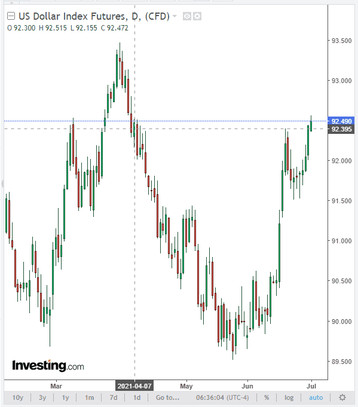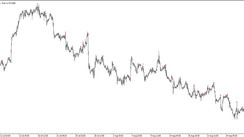The EUR / GBP cross-pair rose sharply early in the European session today, jumping 30 pips to 0.8600 mark after IHS Markit reported manufacturing gains in Germany and the Eurozone. Germany's purchasing managers' index (PMI) rose to 65.1 in June from 64.4 in May, according to data from IHS Markit. A similar PMI for the Eurozone manufacturing sector rose to 63.4 in June from 63.1 in May, hitting a record high for the fourth straight month.
The growth in production and new orders, coupled with limited production capacity, contributed to the acceleration of the rate of creation of new jobs to the highest level in the history of maintaining such statistics, economists at IHS Markit stated. At the same time, the growth rate of demand against the background of further easing of restrictive measures led to the fact that demand in the market exceeds supply, while problems with supply and logistics limit the possibilities of companies. This is putting upward pressure on prices with unprecedented strength, IHS Markit adds.
Thus, the PMI for the manufacturing sector reached all-time highs in the four largest economies in the Eurozone - Germany, France, Italy and Spain.
At the same time, published by IHS Markit half an hour later (at 08:30 GMT), the purchasing managers' index (PMI) for the UK manufacturing sector was revised to 63.9 in June from 64.2. In May, the index was 65.6, which is a record high. However, a slight change (revision) for the worse in the PMI value was enough for the pound to drop sharply both against the dollar and in cross-pairs, including EUR / GBP.
Manufacturing UK sector "is suffering from rising inflationary pressures, while Brexit-related trade problems exacerbate supply problems”, IHS Markit noted.
Speaking at the same time, the head of the Bank of England, Andrew Bailey, said that "inflation growth will be temporary", and "the Central Bank should not overreact to a temporary rise in inflation", confirming the opinion of market participants that the Bank of England will not rush to tighten monetary policy in the near future.
The pound is also under pressure from the continuing contraction of the GDP (according to data released on Wednesday, in the first quarter of the UK GDP contracted by 1.6%, although the first estimate assumed a decrease of 1.5%. In annual terms, GDP contracted by 6.1 %) and growing concern about the new strain of the Delta coronavirus spreading in the UK.
At the same time, the euro was also positively influenced by the data published (at 09:00 GMT) from the European labor market, according to which the unemployment rate in the Eurozone was 7.9% in May against 8.1% in April (the forecast was 8, 0%). The unemployment rate in the Eurozone fell due to the easing of quarantine measures and the resumption of the work of service companies, Eurostat said.
Thus, the publication of positive macro data for the Eurozone and weaker ones for the UK contributed to the growth of EUR / GBP at the beginning of today's European session.
Nevertheless, the current growth in EUR / GBP is most likely only of a short-term corrective nature. Since the beginning of this year, when the Brexit epic finally resolved (the UK finally left the EU on January 31), EUR / GBP has been trading in a steady downtrend, in the area below the key resistance level 0.8730 (see Technical Analysis and Trading Recommendations). Economists expect the UK economy to recover solidly this year amid a successful vaccination campaign, and the UK government is still set to fully reopen the economy as early as July 19.
Meanwhile, market participants are preparing to the publication on Friday (at 12:30 GMT) monthly data from the US labor market, which is of key importance for the Fed (along with inflation and GDP data).
The optimistic data from ADP released yesterday strengthened investor confidence in the positive official report from the US Department of Labor. The ADP's report on private sector employment, which was released on Wednesday, indicated a 692k rise in employment after rising 886k in May.
An increase in the number of jobs in the non-agricultural sector is expected in June by 690 thousand after 559 thousand in May and a drop in the unemployment rate by 0.1%, to 5.7%. The confident improvement in the state of the labor market could provoke a new round of talk about the fact that the Fed may move to a tighter monetary policy faster than so far announced by the leadership of the central bank.

At the time of publication of this article, the dollar index DXY was at 92.49, 10 points above the maximum of last week. The dollar is likely to continue to strengthen if the forecast from the US Department of Labor is confirmed.





